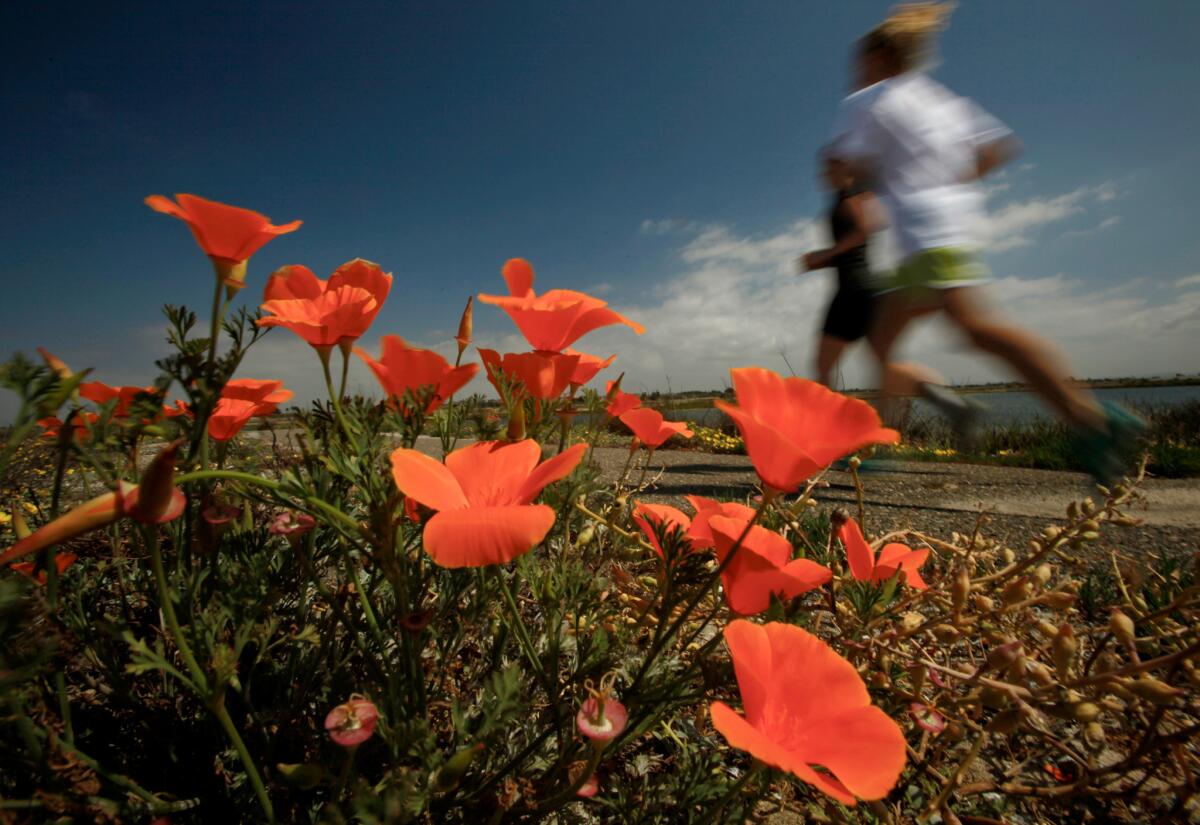Opponents say housing plan would destroy Native American site

- Share via
The California Coastal Commission is slated to decide whether Huntington Beach can change the zoning designation of a parcel to allow housing on a site that opponents say is home to 9,000 years’ worth of Native American artifacts and remains.
Commission staffers have recommended against allowing Huntington Beach to rezone a portion of the Bolsa Chica mesa because the changes would “eliminate a higher priority land-use designation and does not assure that significant culture resources and sensitive habitats will be protected” under the California Coastal Act.
The move would also violate a part of the Local Coastal Program — local governments’ guide to development in the coastal zone — that the commission has already approved, the Huntington Beach Independent reported.
The Bolsa Chica Land Trust has also argued, along with residents and others, that the proposed housing development would destroy 9,000 years of Native American cog stones and artifacts.
“The trust absolutely agrees with the commission staff that, as submitted, the project needs to be denied,” said board member and City Councilwoman Connie Boardman.
The council in 2010 approved changing the land use designation of a 5-acre parcel known as the Ridge, at the southeast corner of Bolsa Chica Street and Los Patos Avenue, from open park space to residential use.
Property owner Signal Landmark and developer Hearthside Homes planned to build 22 “green” homes on the site.
The land trust sued the city and the developer in 2010 to stop the project and force a deeper analysis of its potential effects. The lawsuit is on hold under a mutual agreement among the three parties until coastal commissioners hear the issue, Boardman said.
“Sadly, [Native Americans] didn’t leave gold-laden tombs or majestic monuments,” land trust Executive Director Kim Kolpin said, comparing the Ridge site to the treasures of Egypt. “What they left here, though, was the story of early civilization here in North America.”
She added that the most appropriate way to study the artifacts would be to leave them where they are. Removing the items from the site would reduce its significance and value, Kolpin said.
“This predates Stonehenge. This predates the pyramids,” she said. “And [developers] are going to destroy it to put a couple of houses on it?”
Boardman said J. Daniel Rogers, former North American archaeology division head for the Smithsonian Institution’s National Museum of Natural History has said that the Ridge property is a “site of international significance.”
Still, Kolpin said getting help from the government is difficult.
The Tongva and Juaneño people, who consider Bolsa Chica to be sacred, are not federally recognized. Additionally, private property rights in California do not favor preservation efforts, she said.
When the council reviewed the plans in 2010, city officials, citing Scientific Resource Surveys Inc.’s ground analyses, said it was unlikely that artifacts or remains would be found in the area.
But Councilwoman Jill Hardy was concerned because Scientific Resource Surveys had said the same thing about the Brightwater site, an adjacent development project where about 100,000 artifacts and roughly 200 ancient remains were reportedly found.
The company did many tests at the Ridge and still believes nothing of significance will be found, Boardman said. She added that the coastal commission fined the company $430,000 for doing unauthorized work on the Goodell property, a 6-acre site directly below the Ridge that also has archaeological significance.
“Just because auger holes have been dug down to a certain depth doesn’t mean there’s not important resources, culturally, out here,” Boardman said.
She has worked to protect and preserve Bolsa Chica with the land trust since 1993, when Signal Landmark wanted to build about 5,000 homes on the wetlands.
Ideally, she would like to see the property owners of both the Ridge and Goodell sites sell the land to the trust or another nonprofit organization to allow for the preservation of the area.
“That’s the win-win for everyone,” Boardman said. “Signal Landmark and the Goodell family could make money on their property, the Native Americans’ sites would be preserved … and everyone would benefit.”
Ed Mountford, a spokesman for the housing project, could not be reached for comment.
The commission is slated to review the matter on Jan. 8.
ALSO:
Two children among four people found dead in Fontana home
Inmate who escaped from Acton fire camp arrested in Anaheim
Same-sex wedding planned for Rose Parade float prompts criticism
Twitter: @acocarpio
Anthony Clark Carpio is a Times Community News staff writer.
More to Read
Sign up for Essential California
The most important California stories and recommendations in your inbox every morning.
You may occasionally receive promotional content from the Los Angeles Times.










